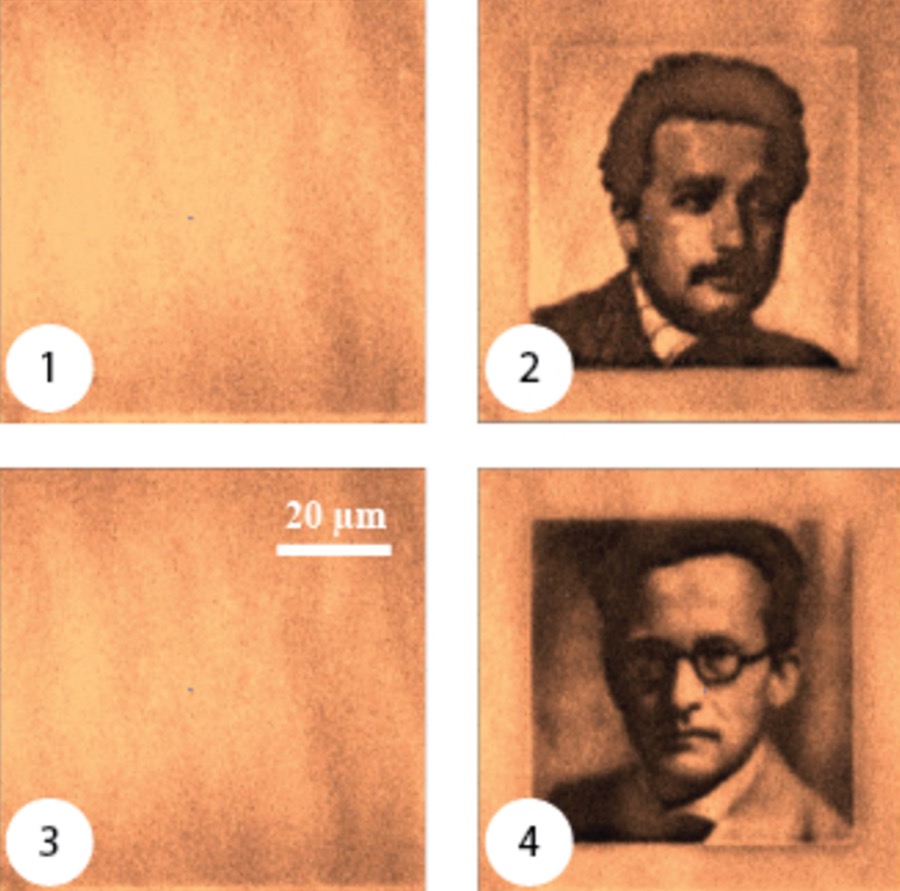
It’s said diamonds are forever and if the results of a new study published this week leads to a new, more practical use of the precious stones, data could also be stored on them, virtually forever.
According to a paper available at the journal Science Advances, diamonds can be used as a way to store vast amounts of data using atom-size flaws ordered in 3D arrays.
The authors, a team of physicists from City University of New York, used lasers to encode and read data on diamonds’ atomic-sized imperfections, known as a nitrogen vacancy centres.
They treated those minuscule spaces as magnets that could repel or absorb electrons and encoded simple gray-scale images, such as the faces of Albert Einstein and Erwin Schrödinger by adding an electron and taking another away using lasers.

The scientists encoded images of Albert Einstein and Erwin Schrödinger on a diamond by adding and removing electrons with green and red lasers. (Image: Meriles Group, City College of the City University of New York)
The results of these experiments suggest that diamonds could be used to encode data in the form of negatively and neutrally charged defects, which lasers can read, write, erase and rewrite, the physicists said.
“With these advanced protocols, the storage capacity of a diamond would surpass what existing technologies can achieve,” the authors wrote in a blog. “This is just a beginning, but these initial results provide us a potential way of storing huge amount of data in a brand new way. We’re looking forward to transform this beautiful quirk of physics into a vastly useful technology.”
Comments
Roger Glover
Going with an opto-mechnical system seems like a step backwards in terms of cost, efficiency and reliability. Perhaps there is an advantage in terms of data storage permanency?